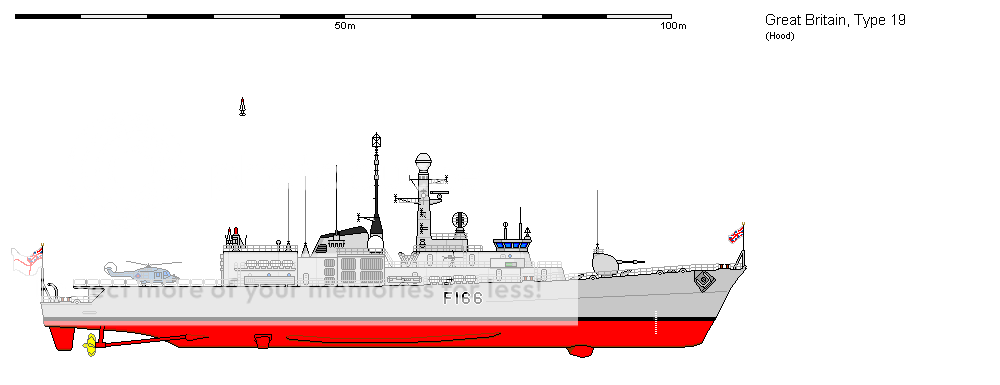- Joined
- 27 September 2006
- Messages
- 6,418
- Reaction score
- 6,827
Sorry if some of you are irritated by this sort of thread, but they do seem to provoke some fantastic contributions from the various interested parties.
We have had some excellent discussions on the RN capital ships in the 1960s, but the escort question has only been dealt with in connection with specific projects.
I pose a question based on a line in one of the usual source books (I think it is "Rebuilding the Royal Navy"). Should the RN have carried on building Leander class frigates as long as they did? Delays in designing the replacement Type 22 meant that the Type 21 had to be brought in as an interim type (or were they just replacements for other elderly frigates).
There is quite a long gap between the commissioning of the last Leanders in the early 1970s and the arrival of the first Type 22 at the end of the decade. In comparison, the US Navy were able to move rather more quickly with its Perry and Spruance programmes.
Air defence escorts also offer a picture of delay and waiting for new kit. The last two County class (Antrim and Norfolk) would not have been ordered if the Type 82s had not been delayed. As it was, HMS Bristol never really entered service, because of various mishaps. The first Type 42, HMS Sheffield, did not arrive until the mid-70s, some 5 years after the last County.
By the end of the 70s the County class and the Leanders were obsolete ships, lacking effective new systems, except where expensive conversions (Exocet and Ikara, and in the 80s, Seawolf) improved their abilities somewhat. The USN was able to fit Harpoon and new helicopters, as well as point defence missiles, to its Knox class escorts and DLG/DLGN ships were also upgraded relatively easily.
Even in 1982 the RN had only a handful of air defence ships (3 Type 42 and 2 Type 22s initially) out of a much larger number of escorts, mainly armed with 4.5 inch guns and out of date SAMs. Even without its big carriers, a USN force of the same size would have had a much broader set of capabilities.
At a time when the RN is once again asking the taxpayer for big ticket ship construction programmes, following on from the dismal Type 45 experience ( 2 ships in service(just) when Japan, Germany, Spain, Norway and others have all introduced similar ships with much less fuss and cost. Is a task force equipped with a selection of Type 42 and 23/22 ships shepherded by one or two Type 45s able to do anything worthwhile in the absence of the huge US Navy? Liam Fox must be asking similar questions to John Nott in 1981. Next time the RN may not face an opponent armed with non-fuzing bombs and a handful of missiles supplied by a friendly country.
UK 75
We have had some excellent discussions on the RN capital ships in the 1960s, but the escort question has only been dealt with in connection with specific projects.
I pose a question based on a line in one of the usual source books (I think it is "Rebuilding the Royal Navy"). Should the RN have carried on building Leander class frigates as long as they did? Delays in designing the replacement Type 22 meant that the Type 21 had to be brought in as an interim type (or were they just replacements for other elderly frigates).
There is quite a long gap between the commissioning of the last Leanders in the early 1970s and the arrival of the first Type 22 at the end of the decade. In comparison, the US Navy were able to move rather more quickly with its Perry and Spruance programmes.
Air defence escorts also offer a picture of delay and waiting for new kit. The last two County class (Antrim and Norfolk) would not have been ordered if the Type 82s had not been delayed. As it was, HMS Bristol never really entered service, because of various mishaps. The first Type 42, HMS Sheffield, did not arrive until the mid-70s, some 5 years after the last County.
By the end of the 70s the County class and the Leanders were obsolete ships, lacking effective new systems, except where expensive conversions (Exocet and Ikara, and in the 80s, Seawolf) improved their abilities somewhat. The USN was able to fit Harpoon and new helicopters, as well as point defence missiles, to its Knox class escorts and DLG/DLGN ships were also upgraded relatively easily.
Even in 1982 the RN had only a handful of air defence ships (3 Type 42 and 2 Type 22s initially) out of a much larger number of escorts, mainly armed with 4.5 inch guns and out of date SAMs. Even without its big carriers, a USN force of the same size would have had a much broader set of capabilities.
At a time when the RN is once again asking the taxpayer for big ticket ship construction programmes, following on from the dismal Type 45 experience ( 2 ships in service(just) when Japan, Germany, Spain, Norway and others have all introduced similar ships with much less fuss and cost. Is a task force equipped with a selection of Type 42 and 23/22 ships shepherded by one or two Type 45s able to do anything worthwhile in the absence of the huge US Navy? Liam Fox must be asking similar questions to John Nott in 1981. Next time the RN may not face an opponent armed with non-fuzing bombs and a handful of missiles supplied by a friendly country.
UK 75

